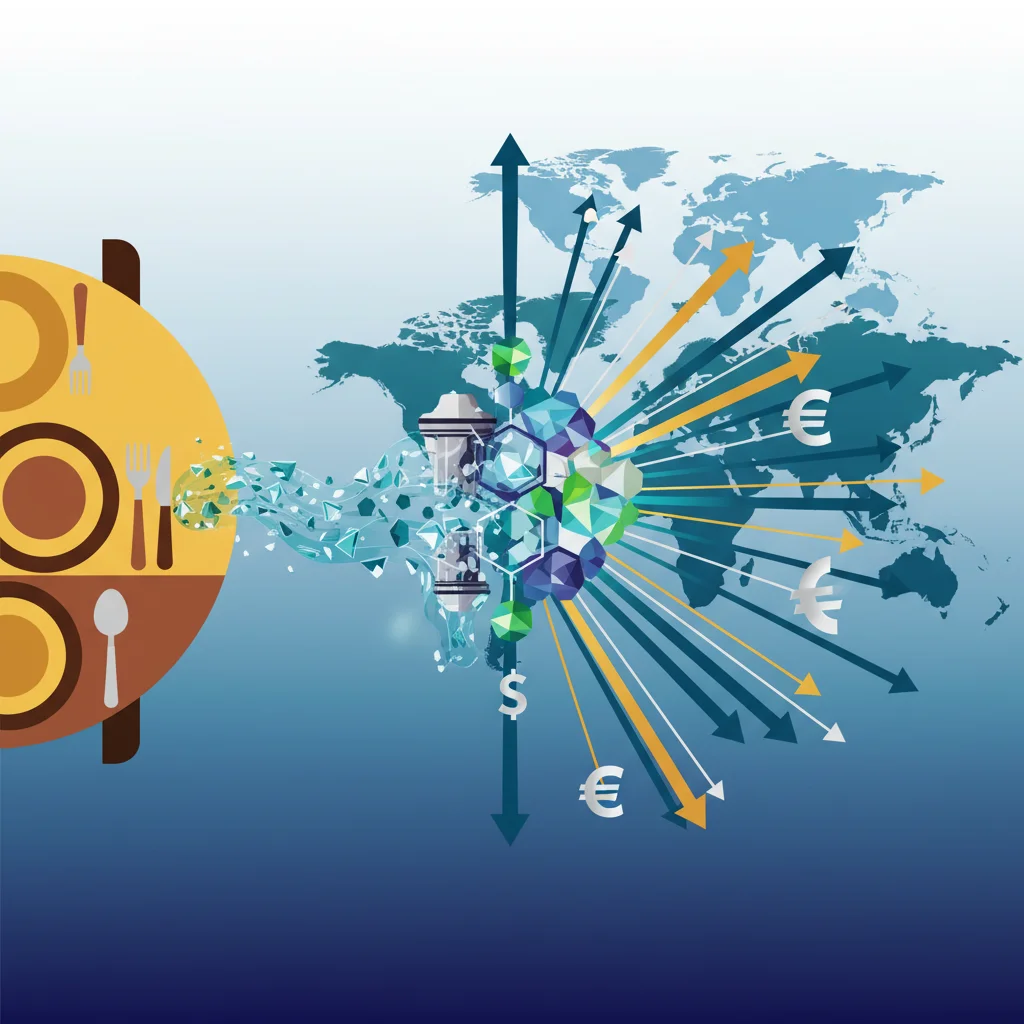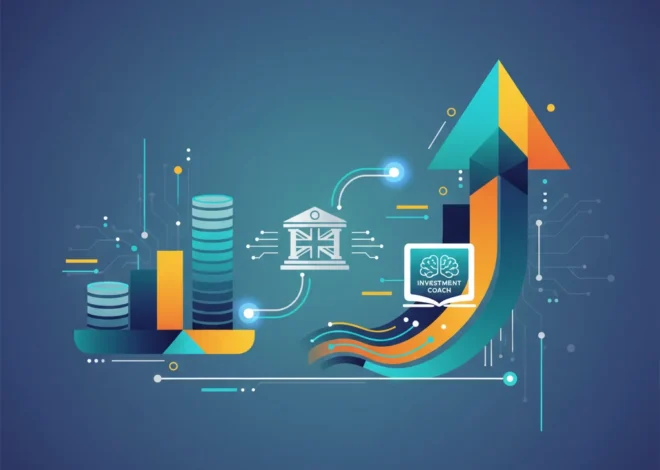
From Dining Table to Global Impact: The Multi-Trillion Dollar Investment Case for a Microplastic Solution
In the world of high finance and disruptive technology, we often imagine innovation emerging from gleaming Silicon Valley labs or the bustling trading floors of New York. We picture billion-dollar R&D budgets and teams of seasoned executives. But sometimes, the most profound solutions—the ones with the potential to reshape industries and generate immense economic value—begin in the most unassuming of places. In this case, it was a mother-in-law’s dining table.
Irish engineer and inventor Fionn Ferreira has developed a groundbreaking device to capture microplastics from water, a creation conceived not in a corporate headquarters but in a humble domestic setting. While the story is inspiring on its own, for those in finance, investing, and business leadership, it represents something far more significant: a powerful signal of a burgeoning economic sector set to tackle one of the planet’s most pervasive and costly environmental crises.
This isn’t just an environmental story; it’s a financial one. The fight against microplastic pollution is rapidly evolving from a niche concern into a multi-trillion-dollar economic imperative, creating unprecedented opportunities for savvy investors and forward-thinking businesses. Let’s explore the financial thesis behind this dining-table invention and what it means for the future of the global economy.
The Staggering Economic Cost of Plastic Pollution
To understand the investment opportunity, we must first grasp the scale of the problem. Microplastics—tiny plastic particles less than five millimeters in size—are a global menace. They are in our oceans, our soil, our food, and even our bodies. This isn’t just an ecological disaster; it’s a profound economic liability.
The societal costs associated with plastic pollution, including environmental cleanup, ecosystem degradation, and health-related expenses, are staggering. A 2021 report by the World Wildlife Fund (WWF) estimated that the lifetime cost of the plastic produced in that year alone would be $3.7 trillion. Without drastic intervention, this figure is projected to soar. This immense cost represents a market failure, and where there is market failure of this magnitude, there is an equally immense opportunity for solutions.
Consider the direct impacts on key sectors of the economy:
- Fisheries & Aquaculture: Contaminated seafood stocks threaten a global industry worth hundreds of billions of dollars, impacting food security and livelihoods.
- Tourism: Polluted beaches and marine environments deter tourists, impacting economies that rely heavily on their natural beauty.
- Healthcare: The long-term health consequences of microplastic ingestion are still being studied, but they represent a looming, unquantified risk to public health and a potential strain on healthcare systems worldwide.
This is the economic backdrop against which innovations like Fionn Ferreira’s must be viewed. His device, which uses a unique combination of oil and magnetic powder to attract and remove microplastics, isn’t just cleaning water—it’s mitigating trillions of dollars in future economic damage. For the investment community, that is a compelling value proposition.
Inside the Gilded Cage: Global Finance on the Brink as US-China Tensions Boil Over
The Investment Thesis: ESG, Deep Tech, and the New Economy
For decades, environmental solutions were often viewed as “cost centers” or charitable endeavors. Today, that perspective is obsolete. The rise of Environmental, Social, and Governance (ESG) investing has fundamentally reshaped the landscape of modern finance. Investors are no longer just looking at a company’s balance sheet; they are scrutinizing its impact on the planet and society, recognizing that long-term sustainability is synonymous with long-term profitability.
Innovations in microplastic removal fall squarely into the “deep tech” category—a sector characterized by significant scientific or engineering challenges and the potential for massive impact. Investing in this space is not for the faint of heart, but the potential returns are commensurate with the risks. Here’s how the financial technology and investment world is engaging with this new frontier:
- Venture Capital & Private Equity: Early-stage companies like the one founded by Ferreira are prime targets for venture capital. VCs are seeking out technologies that can scale globally and command a significant market share in the burgeoning “circular economy.” They are placing bets on the foundational technologies that will underpin the next generation of industry.
- Public Markets & The Stock Market: Large, publicly traded companies are under immense pressure from shareholders and regulators to clean up their supply chains and products. This creates a massive B2B market for solutions like Ferreira’s. Companies in the water treatment, manufacturing, and textile industries (major sources of microplastics) will need to integrate this technology, driving revenue for the innovators and boosting the stock market performance of corporations that successfully adapt.
- Green Bonds & Sustainable Banking: As these technologies mature, their large-scale implementation will require significant capital. This is where modern banking and finance play a crucial role. Governments and corporations will issue green bonds to fund the infrastructure needed to deploy these solutions across cities and industrial parks, creating a stable, long-term revenue stream for the underlying technology providers.
To illustrate the shift in investment thinking, consider how a traditional analysis compares to a modern, ESG-integrated approach for a company in the water utility sector.
| Metric | Traditional Financial Analysis | ESG-Integrated Analysis |
|---|---|---|
| Revenue Growth | Focuses on existing service contracts and pricing power. | Also considers revenue from new services like microplastic filtration and reclaimed water. |
| Operational Risk | Evaluates equipment failure and service disruptions. | Adds regulatory risk from plastic pollution mandates and reputational risk from inaction. |
| Capital Expenditure | Views new filtration systems as a necessary cost. | Views investment in advanced filtration as a competitive advantage and a new profit center. |
| Market Positioning | Market share in a defined geographical area. | Leadership position in the high-growth market of environmental technology and the circular economy. |
The Role of Financial Technology in Scaling Solutions
The story of one inventor is powerful, but scaling a solution to a global problem requires the full might of the modern financial system. This is where financial technology, or fintech, becomes a critical enabler. It’s not just about trading stocks; it’s about building the infrastructure for a new, greener economy.
Consider the potential applications:
- Democratized Investing: Fintech platforms allow retail investors to participate in funding rounds for promising green-tech startups, democratizing access to a high-growth asset class that was once the exclusive domain of venture capitalists.
- Supply Chain Transparency: As Ferreira’s company scales, ensuring the materials for its devices are sourced sustainably is paramount. Blockchain technology can offer an immutable ledger to track components from source to factory, verifying their ethical and environmental credentials. This transparency is increasingly demanded by both consumers and institutional investors.
- Impact Measurement & Trading: How do you quantify the value of removing a ton of microplastics? Advanced data analytics and AI, cornerstones of modern fintech, can help create standardized metrics for environmental impact. This could lead to new markets for “plastic credits,” similar to carbon credits, which could be traded on specialized platforms, creating a direct financial incentive for pollution removal.
The underlying economics are clear: as regulatory pressure to address plastic pollution mounts, the cost of inaction will skyrocket. This transforms microplastic removal from a “nice-to-have” into a mandatory operational expenditure for a vast array of industries, creating a predictable, recurring revenue market for solution providers.
Indonesia at a Crossroads: Analyzing Economic Realities in Prabowo's First Year
The Macroeconomic Ripple Effect
The impact of solving the microplastic crisis extends far beyond the balance sheets of a few tech companies. It creates a positive ripple effect across the entire economy. A successful, scalable solution would:
- Create New Industries: A global industry would emerge around the manufacturing, installation, and maintenance of filtration devices, creating jobs in engineering, manufacturing, and logistics.
- Revitalize Existing Sectors: The fishing, aquaculture, and tourism industries would see a direct economic benefit from cleaner waters, leading to higher yields, improved product safety, and increased revenue. According to a World Economic Forum report, ocean-related industries contribute trillions to the global GDP, and protecting this asset is a matter of economic prudence.
- Reduce Healthcare Costs: By removing a major vector for toxins entering the human body, we can preemptively reduce the future burden of a range of potential health issues, saving billions in long-term healthcare expenditures.
- Enhance National Security: Water security is a critical component of national security. Ensuring clean and safe water supplies, free from persistent pollutants, strengthens a nation’s resilience.
The simple device born on Fionn Ferreira’s mother-in-law’s dining table, as reported by the BBC, is a microcosm of a much larger economic shift. It is a testament to the idea that the greatest financial opportunities of the 21st century will lie in solving its greatest challenges. The transition to a sustainable, circular economy is not a cost to be borne, but an investment to be made.
A Stark Admission: UK Chancellor Declares Brexit Deal Caused "Long-Term Economic Damage"
For investors, business leaders, and finance professionals, the key takeaway is this: pay attention to the dining tables. The next disruptive force that will redefine markets and generate generational wealth may not come from a well-established R&D lab, but from a passionate inventor with a brilliant idea. The challenge—and the opportunity—is to build the financial systems and investment vehicles that can find these innovators and provide the capital to turn their brilliant solutions into a global reality.


